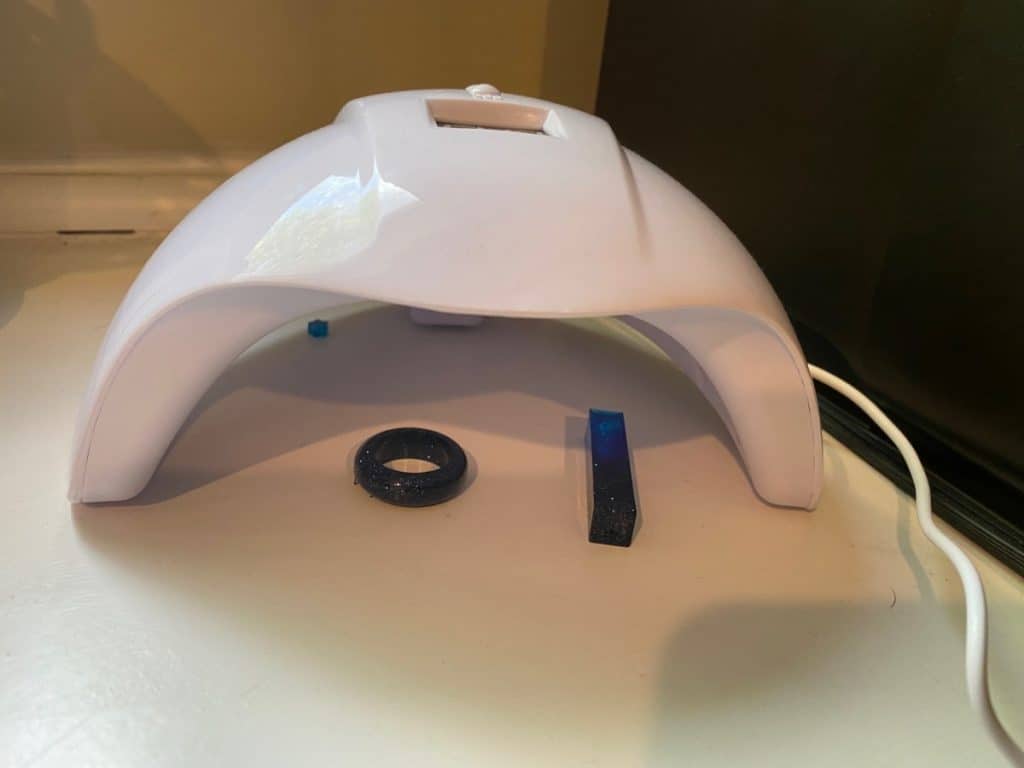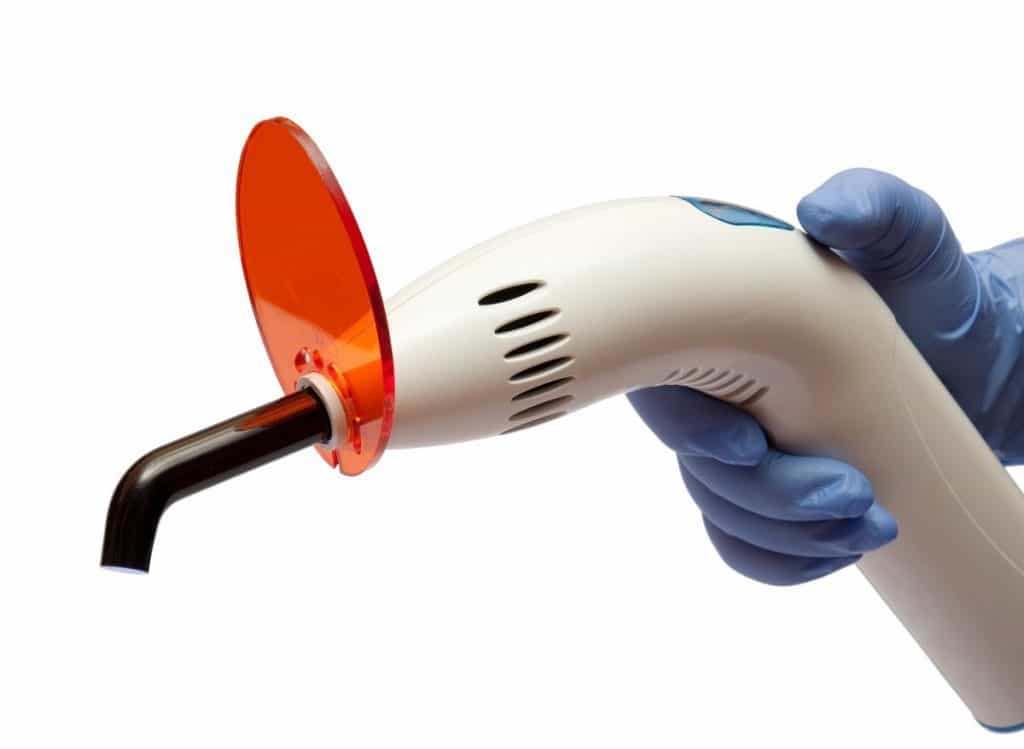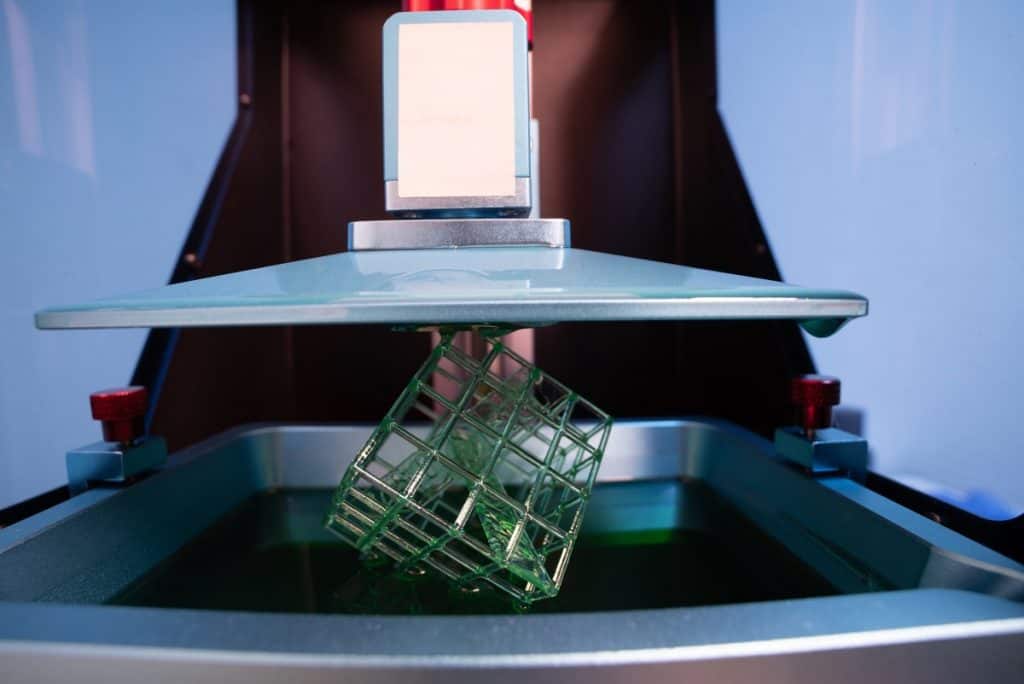Crafters like using ultraviolet (UV) resin because they can easily apply it to small projects. UV resin also takes less time to cure and doesn’t require a two-part mixture, like other liquid plastics. But it takes some creativity to cure this resin if you don’t have a UV light.
Here are a few simple ways to cure your UV resin without a UV light.
- Maximize sunlight by avoiding interference.
- Try a blue light.
- Invest in an affordable blacklight.
UV resin takes less time and is helpful for small projects. However, there aren’t many sources that can mimic the properties of ultraviolet light. This article will explore ultraviolet properties and alternative ways to cure UV resin.

1. Maximize Sunlight by Avoiding Interference
Sunlight has a combination of wavelengths, including ultraviolet. This mix of wavelengths can interrupt the transfer of photons to the resin. These blockages can diminish the amount of light that makes contact with the resin.
If you decide to use sunlight, try to plan for a day with minimal cloud cover. Start early in the morning, as soon as the sun has risen. UV wavelengths take time to penetrate the layers of resin, so try to maximize your exposure time.
To optimize your cure time, you should bring the resin outside for direct access to sunlight. But doing so will put your project at risk of wind damage. Gusts of wind can blow dust and other particles onto the project before it has a chance to cure. You can solve this by setting up cardboard or wood slabs around your project. These barriers can help decrease the exposure to wind and other airborne particles.
Place the resin in a wide-open area on a hard, flat surface. This surface should be several feet off the ground. Make sure the surface does not wobble or lean. A table or stone slab works excellent.
A small project could cure in an hour on a day with a moderate to high UV index. A large project may take much longer. Watch the resin over the next few minutes. As the sun moves, you will need to adjust the position of the project to keep it in direct sunlight.

2. Try a Blue Light
You may also want to consider blue light as an option. If you’ve ever been to the dentist’s office to fix a chipped tooth or bleach your teeth, you may have seen them use a blue wand. This wand is a dental curing light. The blue light helps to harden the composite resin used in many of their procedures.
The radiation in ultraviolet light can be damaging to the sensitive tissues of the mouth. Blue light still contains electromagnetic radiation but in lesser quantities. This decrease in radiation is what makes blue light safer than ultraviolet light.
Dentists administer these dental composites in tiny amounts, so the blue light has no problem curing them in a short amount of time. Blue light does an excellent job of stimulating the photochemical response, but it still lacks the same energy capacity as ultraviolet light.
If you want to try using blue light, plan on waiting a while. The wavelength simply doesn’t carry the same number of photons as UV light. This low photon count means that you’ll need more time for the curing process to complete.

3. Invest in an Affordable Black Light
To cure ultraviolet resin, you need the photons from ultraviolet light. Few other lights will do. If you’ve got the time and resources, invest in a UV light, especially one that’s much smaller and more affordable.
Amazon.com has several fantastic options, including:
- NVTED UV Flashlight Blacklight – A cheap option with just enough wattage to get the job done.
- UV Resin Curing Light 405nm for SLA/DLP 3D Printer – More expensive and much more powerful. Watch your cure time!
- Sovol 3D Printer UV Resin Curing Light – An efficient and powerful light in a solid housing case. Make sure to limit overexposure.
Because of their size, these black lights are practical for smaller projects. They’re also compact and easy to store away when they aren’t in use.
Why You Need Photons To Cure UV Resin
Epoxy resin is a composite compound that, when hardened, resembles solid plastic. This plastic can be drilled, cut, and sanded to fit almost any need.
Resin curing is a simple process with a lot of chemistry. Anyone working with UV resin should understand how UV light helps the resin cure in the first place.
Ultraviolet light is a form of electromagnetic radiation that contains short-wavelength photons. When shined on UV resin, these photons are full of energy that stimulates the electrons in the resin, beginning a photochemical reaction.
The ideal UV light shines between 356-400nm in wavelength. You will also need a UV source with at least 4 watts for enough energy to start the reaction.
During the reaction, the resin hardens through the process we call “curing.” This process involves cross-linking the polymer chains in the material. These microscopic links harden the resin and give the material a sturdy plastic feel.
The process is efficient and straightforward. Once the curing has taken place, and the resin is solid, it is ready to use. The problem with other lights is their lack of photons needed to start the chemical reaction. Most lights that are used for household purposes don’t have the strength of chemical construct to create the reaction needed to harden the resin.

Related Articles
- Why Wash and Cure Resin Prints?
- Can You Put UV Resin Over Epoxy Resin? Details Inside!
- Why Is My UV Resin Sticky After Curing?
- How Long Does It Take For UV To Cure Resin?
- SLA Printer Resins
- Can You Resin Print Without Supports?
Final Thoughts
If you are low on cash or just don’t feel like making the UV light investment right now, you still have options. Using these alternative options can take longer and will require more patience, but they can still deliver the desired results.
Consider using sunlight since all you need is a clear path for the sun to hit the resin. Or you can try to use blue light instead, allowing extra time for slow curing. If these methods still don’t work, explore cheaper options to optimize the results.
Make sure you check out our YouTube channel, and if you would like any additional details or have any questions, please leave a comment below. If you liked this article and want to read others click here.
